Reducing the Waiting-On-Cement Time of Geopolymer Well Cement using Calcium Chloride (CaCl2) as the Accelerator: Analysis of the Compressive Strength and Acoustic Impedance for Well Logging
Abstract
1. Introduction
2. Materials and Methods
3. Results and Discussion
3.1. Effect of Calcium Chloride (CaCl2) on Compressive Strength (F) of GPC
3.2. Effect of Calcium Chloride (CaCl2) on the Acoustic Impedance (Z) of GPC
4. Conclusions
Author Contributions
Funding
Institutional Review Board Statement
Informed Consent Statement
Data Availability Statement
Acknowledgments
Conflicts of Interest
Nomenclature
| Abbreviations | |
| API | American Petroleum Institute |
| ASTM | American Society for Testing Materials |
| atm P | Atmospheric Pressure |
| bwoc | by weight of cement |
| C-S-H | Calcium-Silicate-Hydrate |
| GPC | Geopolymer Cement |
| HPHT | High Pressure and High Temperature |
| OPC | Ordinary Portland Cement |
| SEM | Scanning Electron Microscope |
| WOC | Waiting-on-Cement |
| Chemical Formulae | |
| Al2O3 | Aluminium Oxide |
| CaCO3 | Calcium Carbonate |
| CaCl2 | Calcium Chloride |
| CO2 | Carbon Dioxide |
| CaO | Calcium Oxide |
| H2CO3 | Carbonic Acid |
| H2S | Hydrogen Sulfide |
| Fe2O3 | Iron Oxide |
| SiO2 | Silicon Dioxide |
| NaOH | Sodium Hydroxide |
| Na2SiO3 | Sodium Silicate |
| Notations | |
| Z | Acoustic Impedance |
| V | Acoustic Velocity |
| P | Compressive Load at the Point of Failure |
| F | Compressive Strength |
| A | Cross-Sectional Surface Area |
| ρ | Density |
| ∆t | Transit Time |
References
- Bligh, R.; Glasby, T. Development of Geopolymer Precast Floor Panels for the Global Change Institute at University of Queensland. In Proceedings of the 26th Biennial National Conference of the Concrete Institute of Australia (Concrete 2013), Gold Coast, Australia, 16–18 October 2013; Dao, V., Dux, P., Eds.; Concrete Institute of Australia: Sydney, Australia, 2013. [Google Scholar]
- Glasby, T.; Day, J.; Genrich, R.; Aldred, J. EFC Geopolymer Concrete Aircraft Pavements at Brisbane West Wellcamp Airport. In Proceedings of the 27th Biennial National Conference of the Concrete Institute of Australia (Concrete 2015), Melbourne, Australia, 30 August–2 September 2015; International Union of Laboratories and Experts in Construction Materials, Systems and Structures (RILEM), Concrete Institute of Australia: Sydney, Australia, 2015. [Google Scholar]
- Davidovits, J.; Cordi, S.A. Synthesis of New High Temperature Geo-Polymers for Reinforced Plastics/Composites. In Proceedings of the SPE PACTEC ’79, Costa Mesa, CA, USA, 31 January–2 February 1979; Society of Plastics Engineers: Brookfield Center, OH, USA, 1979; pp. 151–154. [Google Scholar]
- Shill, S.K.; Al-Deen, S.; Ashraf, M.; Hutchison, W. Resistance of fly ash based geopolymer mortar to both chemicals and high thermal cycles simultaneously. Constr. Build. Mater. 2020, 239, 117886. [Google Scholar] [CrossRef]
- Rahman, S.H.A.; Zulkarnain, N.N.; Shafiq, N. Experimental study and design of experiment using statistical analysis for the development of geopolymer matrix for oil-well cementing for enhancing the integrity. Crystals 2021, 11, 139. [Google Scholar] [CrossRef]
- Nasvi, M.M.C.; Gamage, R.P.; Jay, S. Geopolymer as well cement and the variation of its mechanical behavior with curing temperature. Greenh. Gas Sci. Technol. 2012, 2, 46–58. [Google Scholar] [CrossRef]
- Duguid, A.; Radonjic, M.; Bruant, R.; Mandecki, T.; Scherer, G.; Celia, M. The Effect of Carbon Dioxide Sequestration on Oil Well Cements; Department of Civil Engineering, Princeton University: Princeton, NJ, USA, 2009. [Google Scholar]
- Barlet-Gouédard, V. Well technologies for CO2 geological storage: CO2-resistant cement. Oil Gas Sci. Technol. 2007, 62, 325–334. [Google Scholar] [CrossRef]
- Uehara, M. New concrete with low environmental load using the geopolymer method. QR RTRI 2010, 51, 1–7. [Google Scholar] [CrossRef]
- Hewayde, E.; Nehdi, M.; Allouche, E.; Nakhla, G. Effect of geopolymer cement on microstructure, compressive strength and sulphuric acid resistance of concrete. Mag. Concr. Res. 2006, 58, 321–331. [Google Scholar] [CrossRef]
- Lloyd, N.; Rangan, B. Geopolymer Concrete with Fly Ash. In Proceedings of the Second International Conference on Sustainable Construction Materials and Technologies, Università Politecnica delle Marche, Ancona, Italy, 28–30 June 2010. [Google Scholar]
- Rapp, P. Effect of calcium chloride on Portland cements and concretes. Nat. Bur. Stand. 1935, 14, 499–517. [Google Scholar] [CrossRef]
- Samson, O.T.M.D.; Omoniyi, T.M. Correlation between non-destructive Testing (NDT) and destructive testing (DT) of compressive strength of concrete. Int. J. Eng. Sci. Inventig. 2014, 3, 12–17. [Google Scholar]
- Salain, I.M.A.K. Using calcium chloride as an accelerator for Portland pozzolan cement concrete compressive strength development. IOP Conf. Ser. Mater. Sci. Eng. 2019, 615, 012016. [Google Scholar] [CrossRef]
- Vehmas, T.; Kronlöf, A.; Cwirzen, A. Calcium chloride acceleration in ordinary Portland cement. Mag. Concr. Res. 2017, 70, 856–863. [Google Scholar] [CrossRef]
- Rattanasak, U.; Pankhet, K.; Chindaprasirt, P. Effect of chemical admixtures on properties of high-calcium fly ash geopolymer. Int. J. Miner. Metall. Mater. 2011, 18, 364–369. [Google Scholar] [CrossRef]
- Safvana, T.S.; Shehin, A.S.; Salim, S.; Kuruvilla, G. Experimental investigation on the performance of calcium chloride and geogrid in concrete. Int. Res. J. Eng. Technol. 2019, 6, 5160–5163. [Google Scholar]
- Rosyidan, C. The effect of using calcium chloride in G Class cement on starting time and cement pressure. PETRO J. Ilm. Tek. Perminyakan 2019, 8, 91–94. [Google Scholar] [CrossRef]
- Our Business: Power Plant and Water Desalination Plant Locations. Available online: https://www.malakoff.com.my/Our-Business/Power-Plant-and-Water-Desalination-Plant-Locations/ (accessed on 27 April 2021).
- ASTM C618–19: Standard Specification for Coal Fly Ash and Raw or Calcined Natural Pozzolan for Use in Concrete; ASTM International: West Conshohocken, PA, USA, 2019. [CrossRef]
- API RP 10B-2: Recommended Practice for Testing Well Cements, 2nd ed.; American Petroleum Institute (API): Washington, DC, USA, 2019.
- Smolen, J.J. Cased Hole and Production Log Evaluation; PennWell Publishing Company: Tulsa, OK, USA, 1996. [Google Scholar]
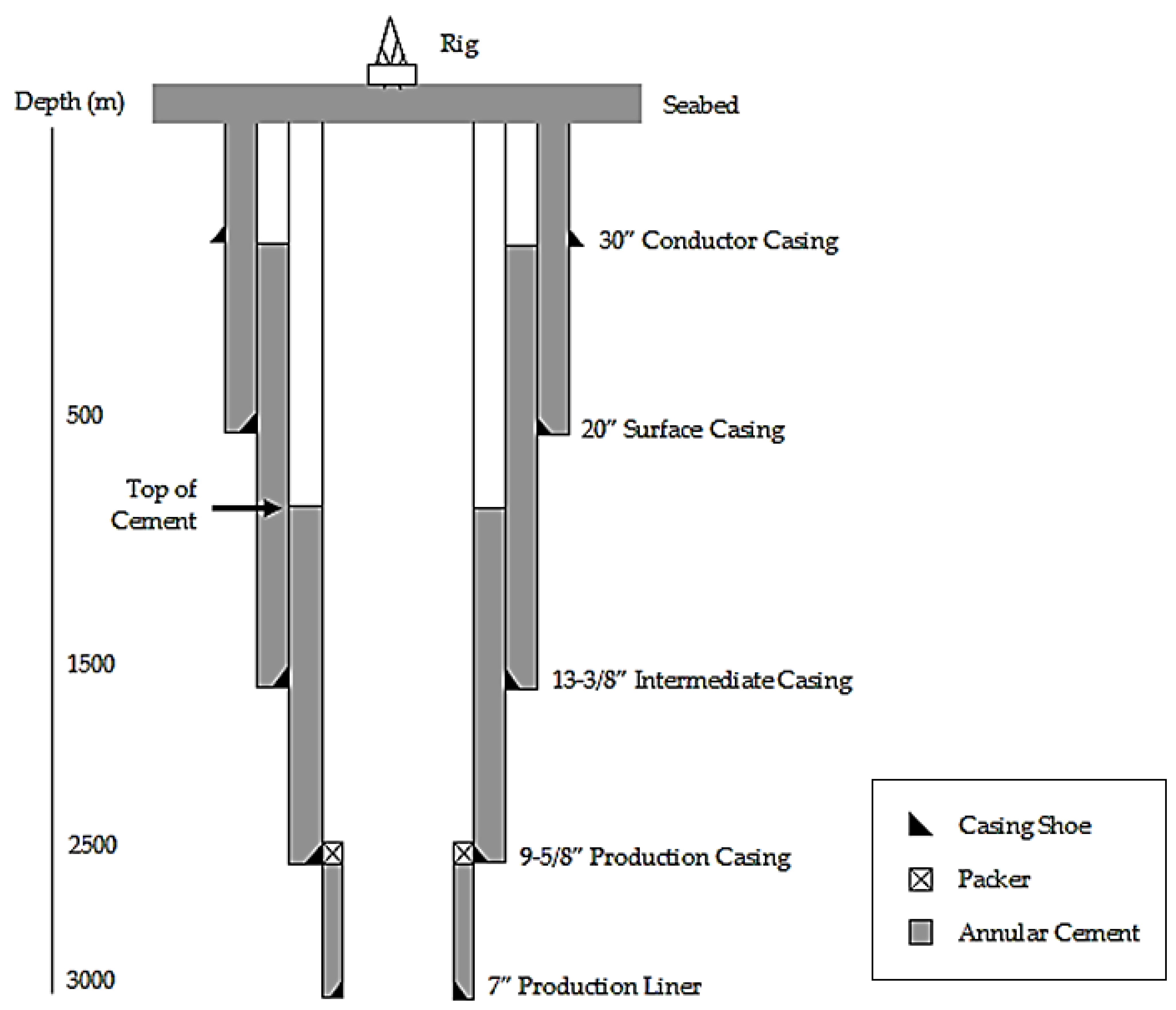

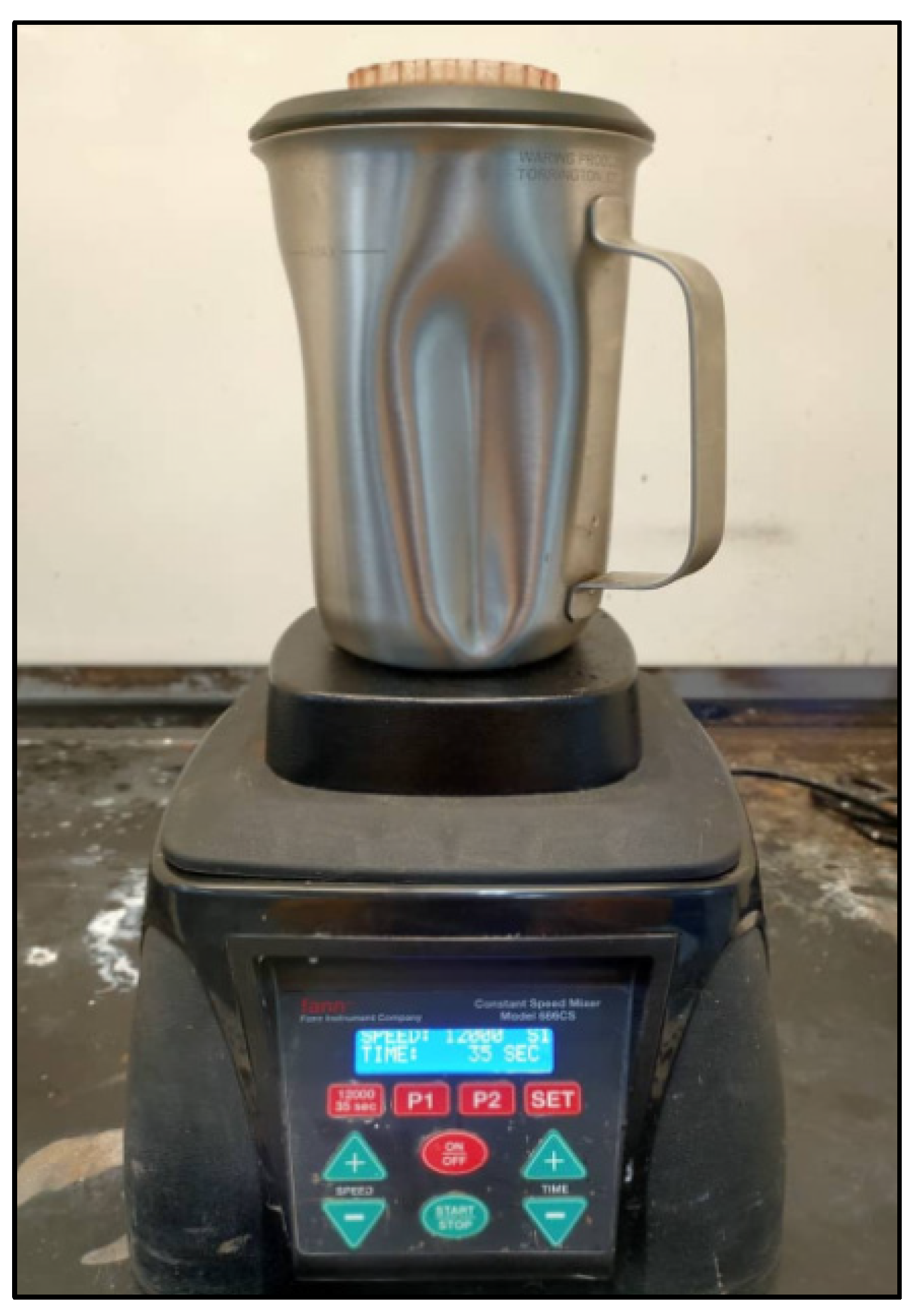

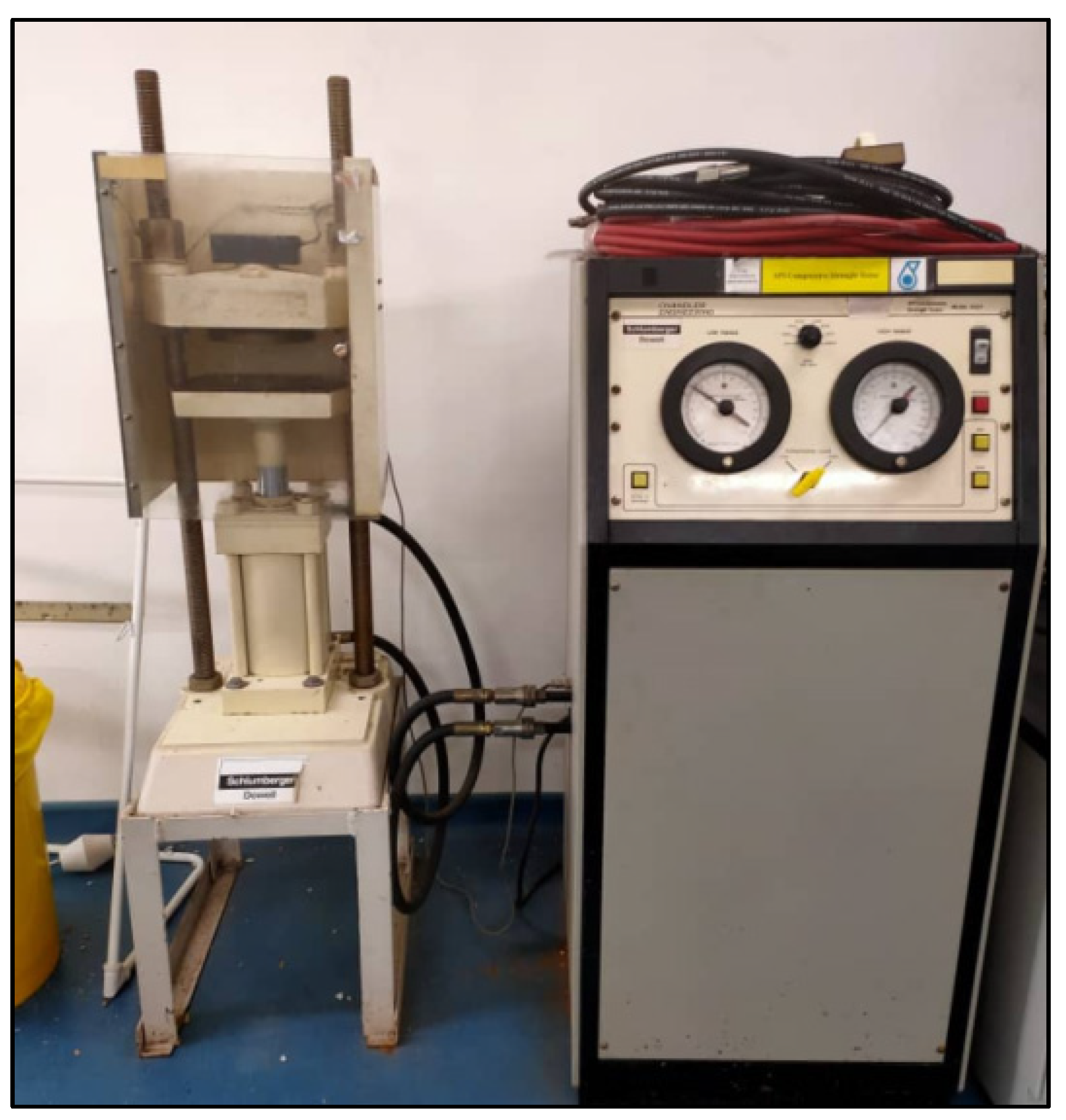

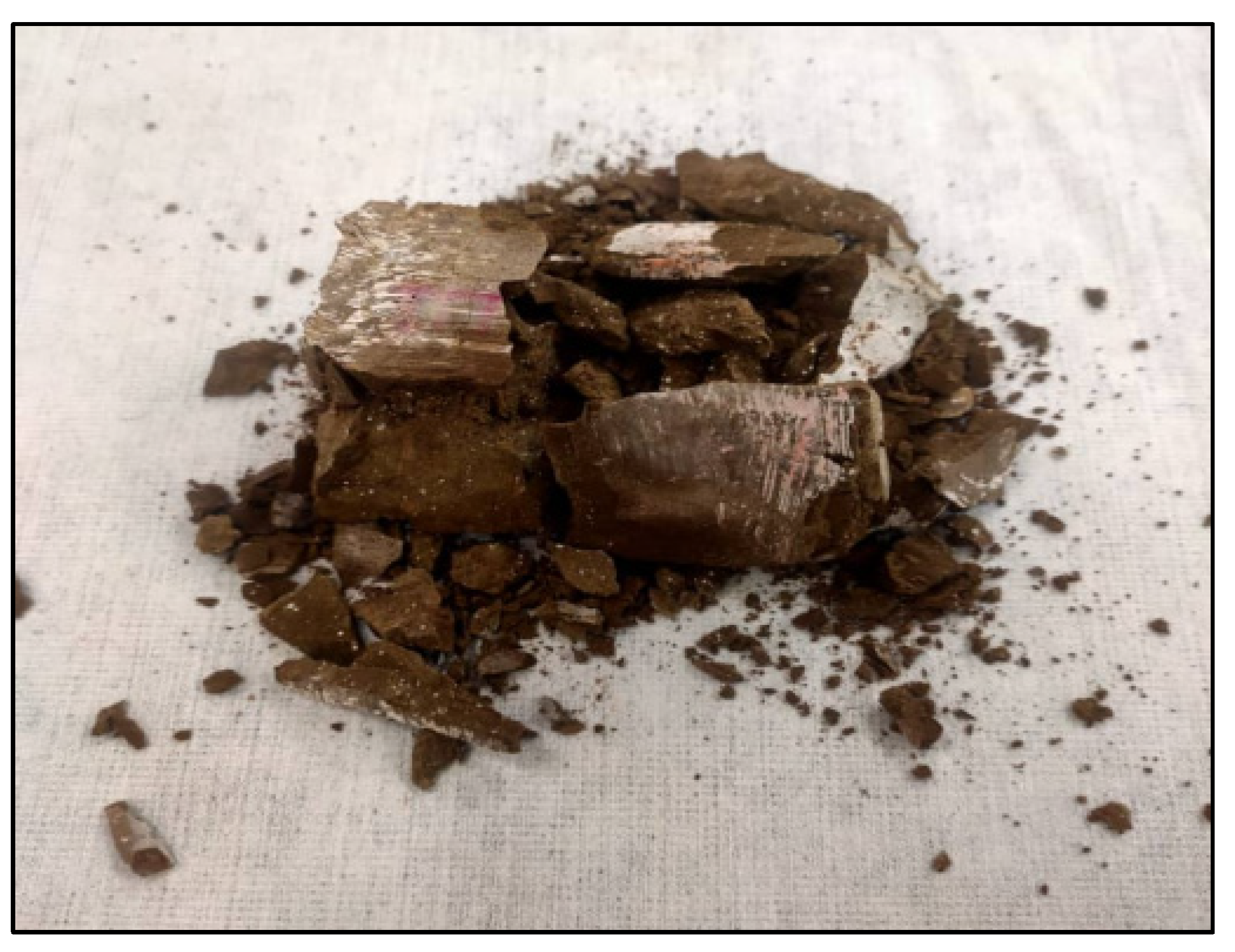



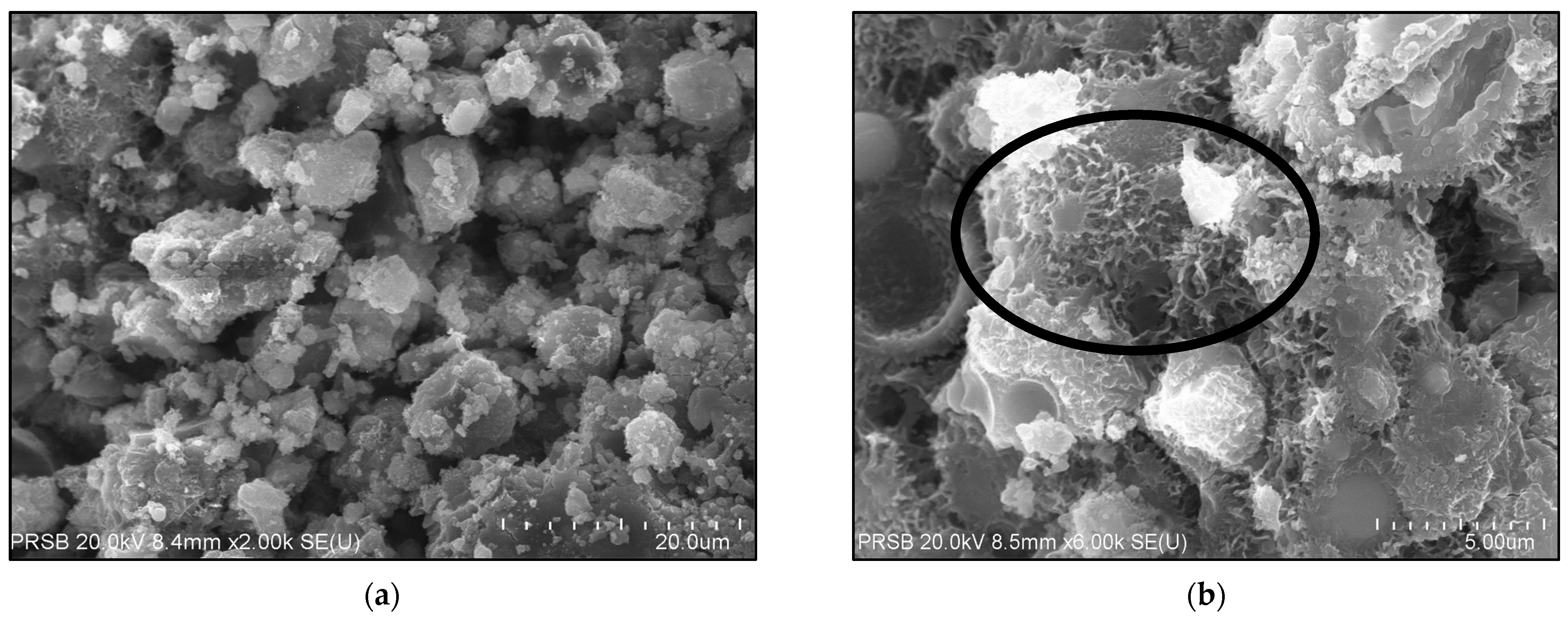
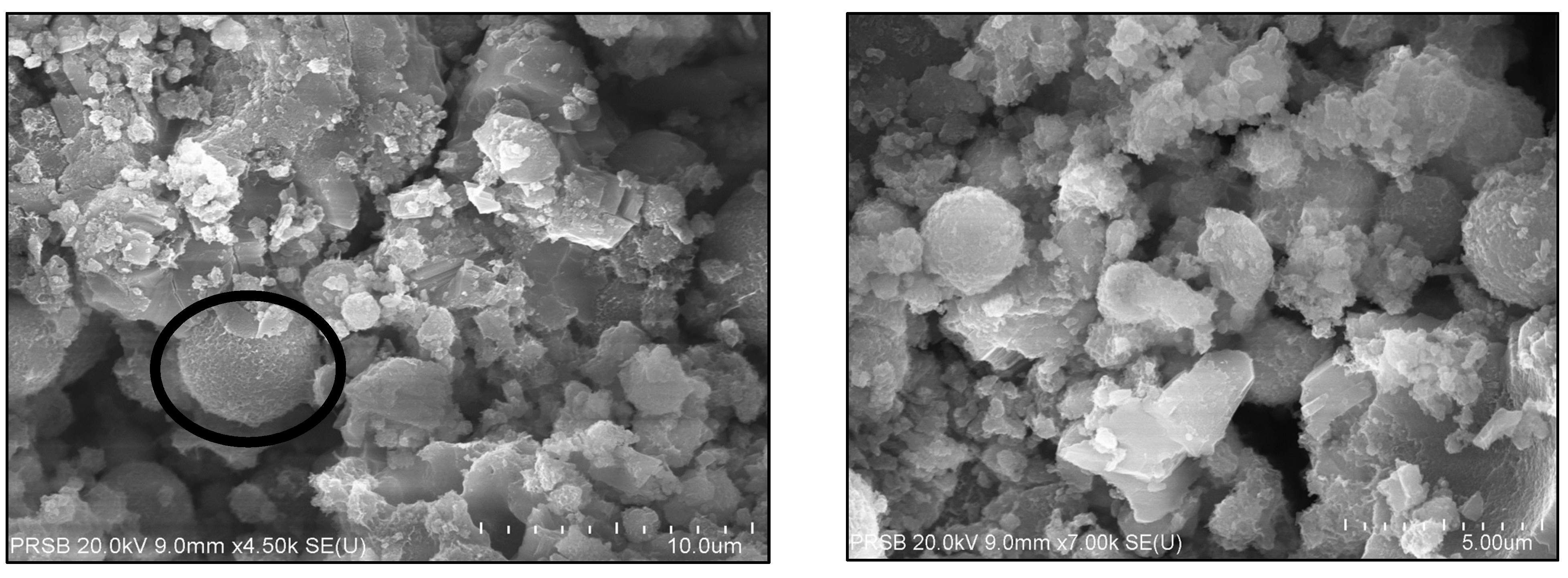
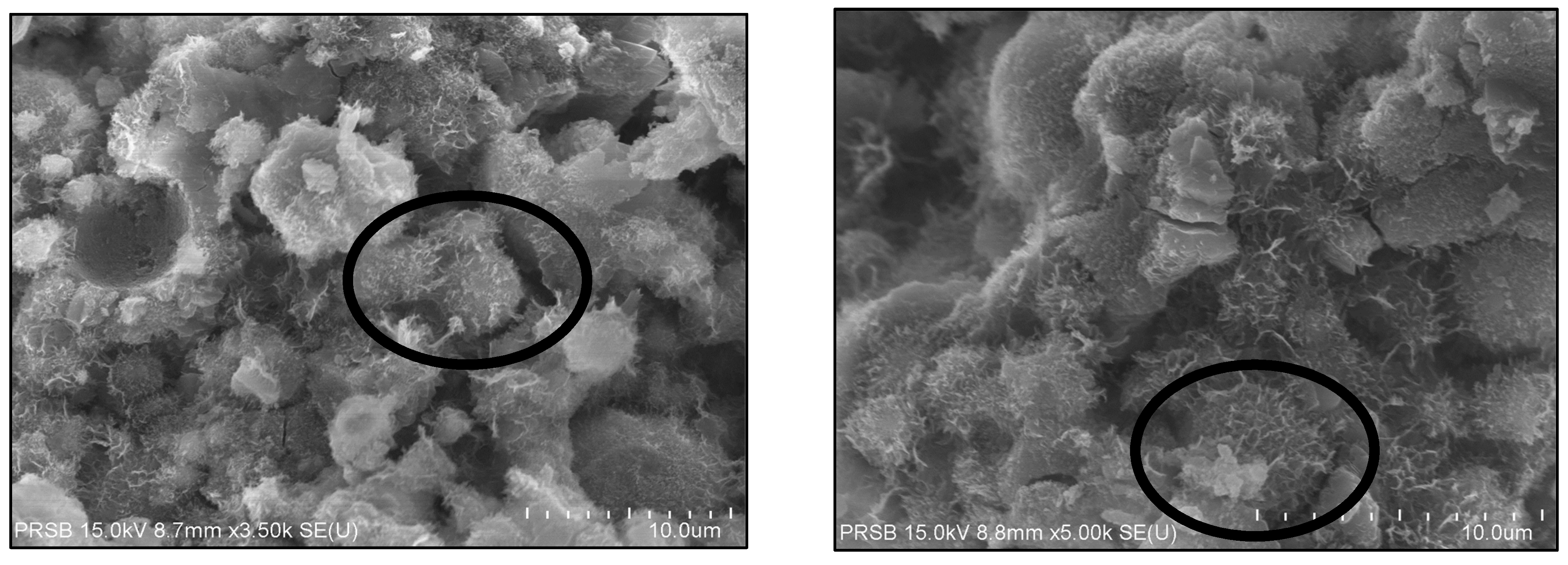



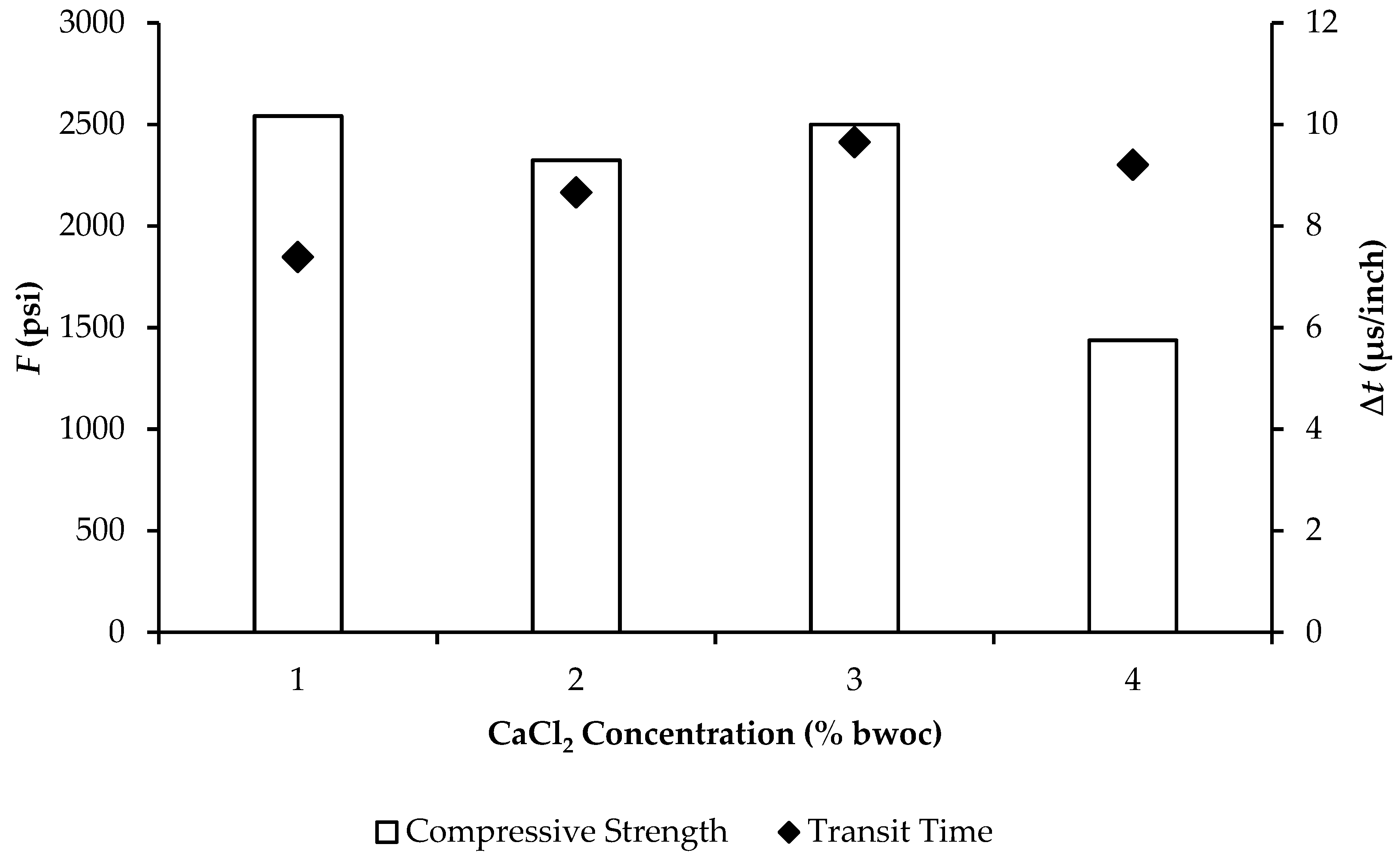

| Material | ∆t (µs/ft) |
|---|---|
| Sandstone | 55.5 |
| Limestone | 47.6 |
| Dolomite | 43.5 |
| Anhydrite | 50.0 |
| Oil | 222.0 |
| Steel Casing | 57.0 |
| Mud | 167.0 |
| Cement | 90.0–160.0 |
| Composition/Properties | Compliance Requirements as per ASTM C618-19 [20] for Class F Fly Ash | Fly Ash of the Tanjung Bin Power Plant |
|---|---|---|
| Silicon Dioxide (SiO2) + Aluminium Oxide (Al2O3) + Iron Oxide (Fe2O3) (% by weight) | ≥70 | 80.9 |
| Calcium Oxide (CaO) (% by weight) | ≤20 | 6.72 |
| Moisture Content (% by weight) | ≤3 | 0.08 |
| Loss of Ignition (% by weight) | ≤6 | 0.43 |
| Specific Gravity | Nil | 2.6521 |
| GPC Sample | Weight (g) | ||||
|---|---|---|---|---|---|
| Class F Fly Ash | NaOH | Na2SiO3 | Water | CaCl2 | |
| Control | 646.99 | 120 | 120 | 193.45 | - |
| GPC1 | 644.55 | 120 | 120 | 189.19 | 6.69 |
| GPC2 | 642.24 | 120 | 120 | 185.16 | 13.03 |
| GPC3 | 639.93 | 120 | 120 | 181.13 | 19.37 |
| GPC4 | 637.62 | 120 | 120 | 177.10 | 25.71 |
| Cement Sample | ∆t (s/m × 10−4) | V (m/s × 103) | Z (Mrayl) |
|---|---|---|---|
| Conventional OPC (based on [22]) | 2.9528–5.2493 | 1.9050–3.3867 | 3.4240–6.0872 |
| GPC1 | 2.9103 | 3.4361 | 6.1760 |
| GPC2 | 3.4115 | 2.9313 | 5.2686 |
| GPC3 | 3.8017 | 2.6304 | 4.7278 |
| GPC4 | 3.6257 | 2.7581 | 4.9573 |
Publisher’s Note: MDPI stays neutral with regard to jurisdictional claims in published maps and institutional affiliations. |
© 2021 by the authors. Licensee MDPI, Basel, Switzerland. This article is an open access article distributed under the terms and conditions of the Creative Commons Attribution (CC BY) license (https://creativecommons.org/licenses/by/4.0/).
Share and Cite
Zulkarnain, N.N.; Farhan, S.A.; Sazali, Y.A.; Shafiq, N.; Abd Rahman, S.H.; Abd Hamid, A.I.; Habarudin, M.F. Reducing the Waiting-On-Cement Time of Geopolymer Well Cement using Calcium Chloride (CaCl2) as the Accelerator: Analysis of the Compressive Strength and Acoustic Impedance for Well Logging. Sustainability 2021, 13, 6128. https://doi.org/10.3390/su13116128
Zulkarnain NN, Farhan SA, Sazali YA, Shafiq N, Abd Rahman SH, Abd Hamid AI, Habarudin MF. Reducing the Waiting-On-Cement Time of Geopolymer Well Cement using Calcium Chloride (CaCl2) as the Accelerator: Analysis of the Compressive Strength and Acoustic Impedance for Well Logging. Sustainability. 2021; 13(11):6128. https://doi.org/10.3390/su13116128
Chicago/Turabian StyleZulkarnain, Nurul Nazmin, Syed Ahmad Farhan, Yon Azwa Sazali, Nasir Shafiq, Siti Humairah Abd Rahman, Afif Izwan Abd Hamid, and Mohd Firdaus Habarudin. 2021. "Reducing the Waiting-On-Cement Time of Geopolymer Well Cement using Calcium Chloride (CaCl2) as the Accelerator: Analysis of the Compressive Strength and Acoustic Impedance for Well Logging" Sustainability 13, no. 11: 6128. https://doi.org/10.3390/su13116128
APA StyleZulkarnain, N. N., Farhan, S. A., Sazali, Y. A., Shafiq, N., Abd Rahman, S. H., Abd Hamid, A. I., & Habarudin, M. F. (2021). Reducing the Waiting-On-Cement Time of Geopolymer Well Cement using Calcium Chloride (CaCl2) as the Accelerator: Analysis of the Compressive Strength and Acoustic Impedance for Well Logging. Sustainability, 13(11), 6128. https://doi.org/10.3390/su13116128








